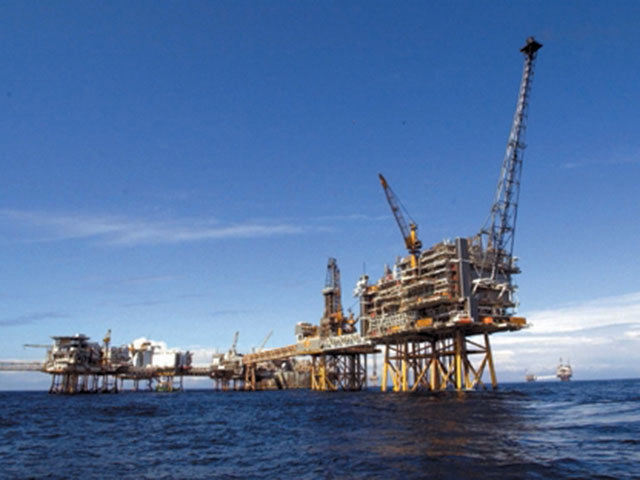
We are where we are, it seems, for the relatively long haul. Bob Dudley, of BP, says the oil price won’t rise much for two or three years.
Goldman Sachs have dropped their three-month Brent prediction to $42 a barrel. And the Saudis said at the Davos Forum that around $50 was the most probable level for some time to come.
So there’s not a lot of good news around.
In these circumstances, the North Sea industry needs all the help and creative thinking it can get. The challenge of how to keep investment going has never been more acute. And, of course, it is shared by oil & gas producing territories throughout the world.
The one closest to us geographically is Norway and we are regularly pointed in its direction as a guide to what the UK is doing wrong.
However, those who favour this script invariably fail to point out that taxation of the industry in Norway has been consistently far higher than in the UK.
Strangely, enthusiasm for the Norwegian model never leads its Scottish political cheerleaders to recommend correspondingly high levels of taxation for the UK sector. Instead, every attempt by UK chancellors to squeeze a bit more out of the industry has been derided by exactly the same critics.
The Norwegian tax take currently runs at 78%, which means that more than 30% of their government’s entire revenues come from taxing oil and gas. This is extraordinarily high by international standards and explains the historic difference in approach which the Norwegians have been obliged to take.
Quite simply, because of this over-dependence, the adjustment they will have to make when oil revenues decline . . . which they are . . . will be much greater than in other oil producing countries including the UK.
The purpose of the oil fund is to protect against that massive future dislocation when it comes, rather than to address shorter-term difficulties like the present situation.
Norwegian PM Erna Solberg said last month that, unless things got significantly worse, they would not deviate from the practice of using just 3% of the fund each year.
The real priority for Norway is to diversify its economy away from oil dependency and using the long-term fund to shore it up would scarcely encourage that process.
While crude comparisons with Norway are highly misleading, we should not be averse to learning, sharing or copying where it makes sense. As in the UK sector, the Norwegians have faced relentless cuts in investment – down by a half since 2000 even before the recent price plunge. Plans for high-cost exploration in the Barents Sea seem certain to be pushed back further.
Again, the Norwegian government has resisted new incentives that its offshore industry is seeking. Since 2005 however, they have operated a system of exploration incentives which have had some success in slowing the trend and identifying new fields; spectacularly so with Johan Sverdrup.
Something similar in the UK is now seen as one measure which would be low cost for the government and, unlike tax cuts, could have an immediate impact. Drilling tax breaks were abolished in the mid-1990s.
Instead of playing one approach against the other, it might make more sense at present to learn from each other and build on the synergies rather than emphasise the differences.
The UK and Norwegian offshore industries have developed in different ways for historic reasons but they now face exactly the same problems and should be working together to develop shared solutions.
For example, the differences of approach have tended to over-ride the geography. Instead of treating the North Sea as a single entity, the UK and Norwegian industries have faced in different directions. The result is that there has been relatively little co-operation in the sharing and development of resources which straddle the two territories – the median fields.
In the early part of the last decade, I was very much involved in trying to correct this omission. There were prolonged talks between the two governments which eventually led to a concordat between them in 2005 which expressed all sorts of good intentions about future co-operation in order to maximise the potential from these waters. I remember taking the then Norwegian energy minister Einar Steensnaes to Shetland in the hope that the treaty could be signed there, but we didn’t quite make that deadline.
Nothing much has been heard of all this since. In 2011, there was another UK–Norway Energy Agreement. But by this time, the focus had shifted away from North Sea production and the median fields to renewables, carbon capture and storage as well as Norway’s role as a supplier of natural gas to the UK.
When I was involved in these discussions, one of the objectives was, of course, to secure construction of the pipeline system that brings gas from the Ormen Lange field to Easington.
It has been operating since 2007 and now accounts for 20% of the UK’s requirements. But this seller and buyer relationship was not intended to be the sole focus of the oil and gas co-operation between Norway and the UK.
At a time when incentives for relatively low cost investments must be part of the package which both UK and Norwegian governments are obliged to think about as a matter of urgency, it may be the appropriate moment to revive the idea of paying more attention to the median fields and making maximum joint use of the infrastructure that serves them.
But co-operation should go well beyond that. There are 100 Norwegian companies operating in Aberdeen and at least as many of our own businesses have a stake in their industry.
The challenges and potential solutions are exactly the same for both countries. In short, there is every reason for the UK and Norway to be working more closely together in these difficult times.
For more from our Energy Voice columnists click here.
Recommended for you
